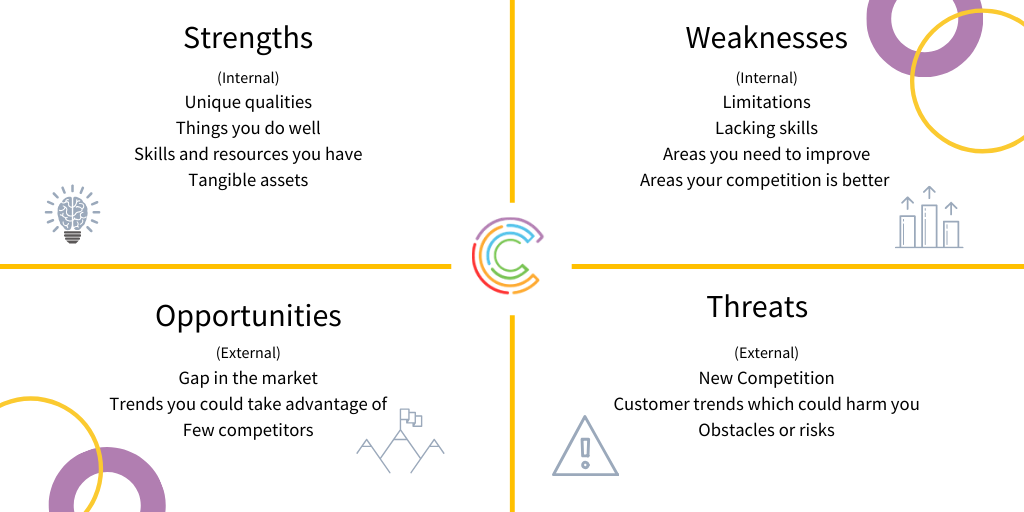Part of the strategic planning for a business is creating a strong workforce as it’s key to developing a collaborative, profitable, streamlined business and a positive, productive culture. We know the importance of building up your people and creating strength and resilience in your workforces, to accelerate your teams and organisations towards growth. So, how do you get started?
The steps to an effective workforce are simple to follow once you know them:
- Analyse your workforce
- Start workforce planning
- Develop performance management
- Try out strategic planning
Analyse your workforce
To begin the transformation to a stronger workforce, start with an analysis of its current state. Analysing your workforce enables you to identify areas of weakness and strength in your organisation before applying informed, strategic planning. It’s vital to appreciate that each organisation is different; an area in which your competitor is vulnerable may be one in which you thrive and vice versa, so listen, learn and analyse where your people excel and where they don’t.
One of the keys to understanding your own workforce and amplifying its strengths is understanding the value that each person and team brings to the company and how their skills move the company toward achieving business goals. Taking the time to observe specific roles will allow you to see where overlapping may occur and therefore identify a surplus or shortage of staff or skills in any one area. If skills are missing, this is a blocker to reaching your goals, but by identifying them, you can move forward. By identifying all of this, you can streamline operations by repurposing skills, restructuring teams or finding the skills you need to fill gaps through training. This analysis of employees and subsequent holistic knowledge of the business allows for clear and strategic decisions going forward, the ability to plan a future workforce with an effective performance management system.
Learning is a huge part of what we do and how we help businesses to achieve the growth they desire. Through analysis, skills gaps will likely be identified, and welcoming new skills into your organisation can bring a significant boost with it. At Chesamel we see the need for enhanced digital skills through our work with clients and are experienced in facilitating this through training and talent acquisition. Many of the skills that you will identify will be digital, with the digital skills gap proving a significant dilemma for many industries, LinkedIn identified the following as the top 5 digital skills desired by employers in 2020: Blockchain, Cloud Computing, Analytical Reasoning, Artificial Intelligence and UX Design.
The analysis needs to become a regular process. Regular workforce analysis is what enables continuous development and not just a one-time workforce revamp. In doing this, business objectives can be regularly referred to as work progresses, keeping teams and individuals aligned to overall organisational goals.
Start workforce planning
Who is responsible for workforce planning?
The responsibility of workforce planning quite commonly lies with the HR team, however, we suggest that there is always a collaborative effort between the HR team and business leaders across all functions of an organisation. . This ensures that objectives from management and their people teams are being considered.
Why is workforce planning important?
Strategic workforce planning is all about forecasting your workforce in order to fulfil your strategic objectives. By analysing demand, supply and gaps in the workforce, organisations can make sure they have the right people to bring them towards their business goals.
Take what you’ve learned in your analysis stage, and apply this to your workforce plan, the implementation of knowledge from your analysis is where progress begins.
Workforce planning begins with business goals, knowing which direction the company is travelling in and how it might need to change over the next few years. An organisation will benefit from taking the time to forward plan and prepare itself with the best, most well-equipped staff for its expected, and unexpected, needs.
Benefits:
Agility: Having the right skills in place for the foreseeable changes that your business may need, means your business is prepared to be agile when needed.
Cost: By having the right amount of people and well-selected talents in each department, businesses will be streamlined, reducing unnecessary costs and redundant roles.
Staff Retention: Successful strategic workforce planning will have built, well-functioning teams with all the skills they need to work together smoothly. Plus, staff who are invested in, through training, feel more valued; 72% of candidates are driven by career advancement opportunities. – MRINetwork.
Workforce Planning and Recruitment
Through workforce planning, recruitment can gain a clear understanding of overall business goals. They will know exactly which skills and qualities are required to propel the company forward, where staff shortages lie and business changes are likely to occur; strategic workforce planning gives recruitment a sharper eye when planning workforces for the future.
Develop performance management
We’re passionate about building teams, and nurturing the people who make them; we also know the importance of both encouraging, maintaining and improving employee performance. Performance management is applied to ensure constant progression for individuals, teams and businesses.
It’s important that, to become an ever-evolving, agile company, the monitoring of performance is a continuous process, not one which only comes around once or twice a year. The benefit of this being, while employees respond well to regular feedback, feeling motivated and valued, managers are able to keep goals clear and up to date.
The CIPD supports introducing a strengths-based approach to the performance management process. This is the idea that opportunities for growth don’t come from correcting weaknesses but instead understanding strengths. By identifying strengths, employees can see how they have done something well and explore how they can build on this in and use those skills in other areas too.
What is the performance management cycle?
In times gone by, performance management followed a cycle, along the lines of plan, perform, track, review, it is now clear that a more continuous and regular approach is much more effective for the employee, the manager and the overall team.
Today we would expect to see regular feedback meetings and one-to-ones in place, these allow employees to keep motivation high and focus clear, as goals are restated and renewed if necessary. Reinforcing role expectations and goals through these regular sessions encourages employees to manage their own work and performance, helping teams run more smoothly. Plus, regular check-ins also go a long way for team building and staff retention, employees knowing that they are being given the time, resources and opportunities to be their best selves.
During these one-to-one sessions, employees can be encouraged to follow an action plan, always looking ahead to the next step. This is how you run your business, therefore this is how your employees should be operating too, supporting the creation of a forward thinking, evolving business.
This approach should not become a large or hard task to manage, but instead become part of company culture; a communicative, open management approach which builds a motivated workforce set for continuous growth.
How does performance management link to performance development?
Performance management and performance development are closely linked. Performance management allows managers to help employees develop their performance by assessing where they are now and how they can improve. Working closely with staff on their progress allows the identification of where strengths and weaknesses lie, which skills they could need or would like to develop next and how to do this. Performance Development Plans (PDPs) are a great way of implementing performance development and have also been shown to be a huge influencer on staff retention.
“87% of millennials state development opportunities are a critical component of what attracts them to a particular company.” – Clear Review
Try out strategic planning
The purpose of strategic planning is to “Set priorities, focus energy and resources, strengthen operations, ensure that employees and other stakeholders are working toward common goals, establish agreement around intended outcomes/results, and assess and adjust the organization’s direction in response to a changing environment.” – Balanced Scorecard.
Aligning your organisational goals is the first step to strategic planning, and the first step to goal setting is vision; create, or revisit, your mission statement and include your employees in this process, they are, of course, integral to you achieving your mission statement and goals. By being inclusive at this important stage, you’ll also increase team satisfaction and employee retention.
Once goal setting is complete, you’ll want to identify the strengths and weaknesses of your organisation, minimising future risks and highlighting areas for development. The easiest way to do this is via a SWOT analysis, consisting of Strengths, Weaknesses – the internal factors affecting your organisation – and Opportunities and Threats – the external factors affecting your organisation.
Involving your workforce and employees in creating your SWOT analysis can make the entire workforce feel accountable, truly understanding the internal and external factors which can affect the organisation moving forward, areas of risk and their role in the bigger picture. In involving the whole workforce, you’ll also reveal any performance issues or skills shortages that you may have missed yourself.
SMART objectives are another great strategic planning tool for your organisation. By setting these Specific, Measurable, Actionable, Realistic and Time-bound objectives, you are forecasting the next one or two years and, just by doing so, are making them more achievable.
Our work with people and teams has given us the insight into how to motivate, plan for and achieve continuous growth and development. Strategic workforce planning, from analysis to performance management allows an organisation to self-evaluate, from all angles and we would support the involvement of all individuals in that organisation for a holistic and comprehensive result.
If you have any further questions around how strategic workforce planning can aid the development of your organisation, do not hesitate to get in touch with us at Info@chesamel.com




